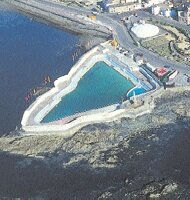Managing local authority heritage assets


Managing Places
Managing Local Authority Heritage Assets: some guiding principles for decision-makers, published in June 2003, is intended for local authority portfolio holders, corporate property officers, conservation specialists, facilities managers and corporate estate architects and building surveyors, the key decision-makers responsible for the funding and care of council-owned heritage assets. The aim of the guidance is to promote and encourage appropriate standards in the management of these assets and high quality design in new work related to them, including public spaces.
The term 'heritage asset’ includes scheduled monuments and other archaeological remains; historic buildings, both statutorily listed and those of more local importance; conservation areas; historic landscapes, including registered parks and gardens, cemeteries and registered battlefields; and historic elements of the wider public realm, including publicly-owned and managed spaces and recreational parks.
The importance of heritage assets
‘Heritage’ is about the values that people attach to places. Our rich inheritance of local authority-owned historic buildings and other heritage assets reflects the history of communities and public services. These buildings make a crucial contribution to local identity and distinctiveness.
They help to enhance the quality of our lives through their use for cultural, educational, leisure and operational purposes and service provision. As an expression of local pride, often over several centuries, they matter to people – who must be consulted about their future.
The guidance covers the following:
- Local authorities’ responsibilities
- Key objectives in managing heritage assets:
-
- Championing quality - Achieving quality in both the care of inherited local authority heritage assets and new construction needs leadership at senior level by a designated design and heritage champion, either the cabinet portfolio holder, or a chief officer. This is crucial to ensuring that all aspects of heritage asset management are co-ordinated and appropriate standards achieved. “Joined-up thinking” and integrated corporate working across the whole authority are vital.
- Setting a good example - It is essential to local authorities’ credibility as stewards of the historic environment that they set a good example in the management of their own heritage assets.
- Making the most of heritage assets - Many heritage assets, particularly historic buildings that have, or had, a functional purpose, are capable of continuing beneficial use. Local authority buildings represent a major public investment. Although such buildings need not always remain in public ownership, being generally well constructed, they can be inherently sustainable and often capable of significant adaptation to meet an authority’s changing needs.
- Providing access for everyone - With thought and care, historic buildings can usually be made accessible to all members of the community without compromising their character and quality.
- Good management planning for heritage assets
-
- Know what you own - In order to review and rationalise council-owned property and provide for funding and managing heritage assets, it is essential to have full and up-to-date information on the extent, nature and physical condition of the estate.
- Develop a council-wide strategy - An over-arching strategy for council property, regularly reviewed within the authority’s overall strategic plans, will be the key to keeping heritage assets in compatible uses, or determining appropriate disposal. The local authority’s over-arching strategy for its property should support its wider strategic priorities.
- Understanding as the basis for management
- The importance of maintenance
- Disposal of heritage assets
- Taking a positive attitude to disposal and obtaining optimum value
What's New?
-
Welcome to the HER21 page. This page offers access to the full suite of HER21 project reports.
-
Please help us to improve our website by completing a short survey and you could win a book of historic photographs
